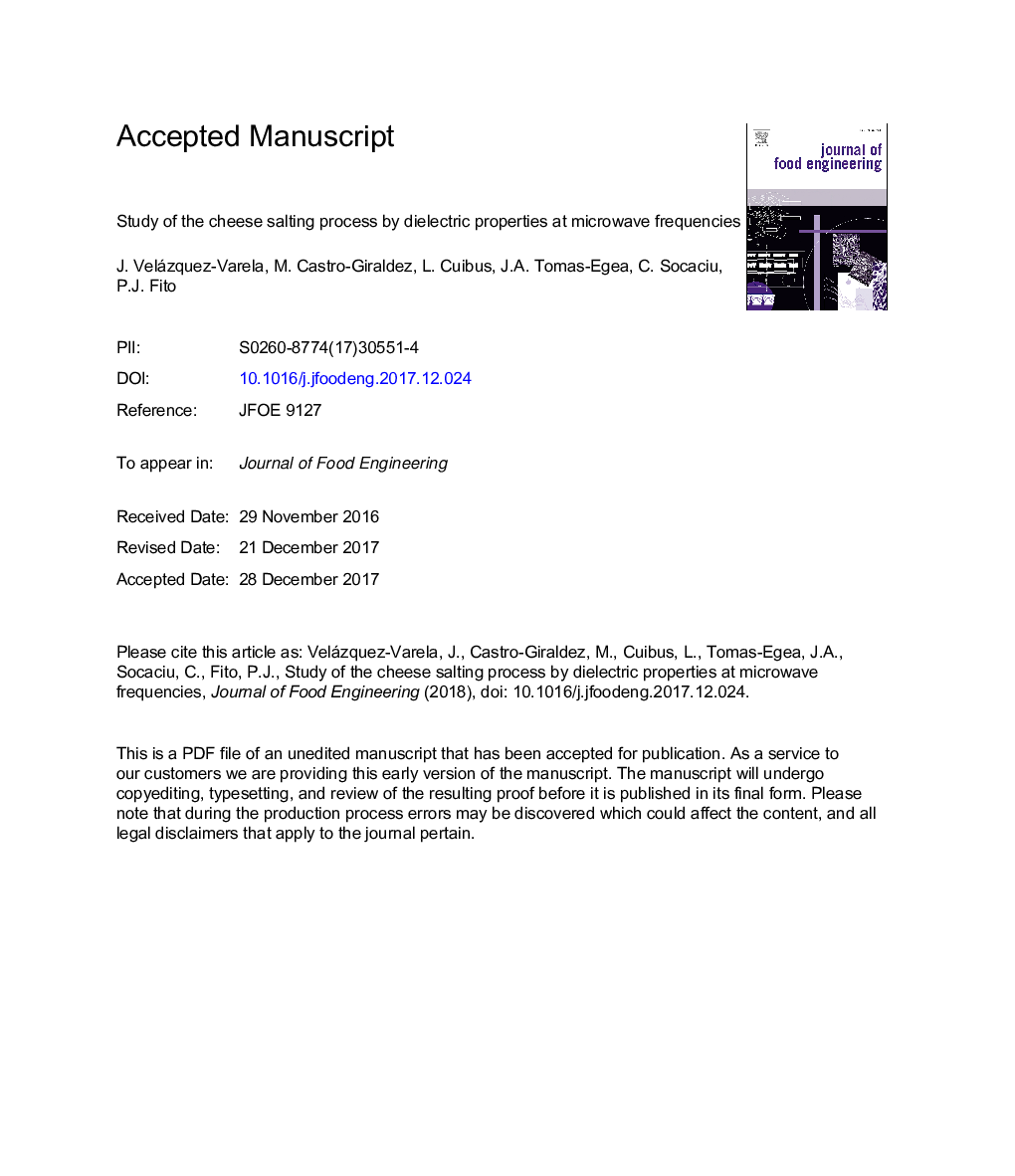| Article ID | Journal | Published Year | Pages | File Type |
|---|---|---|---|---|
| 6664685 | Journal of Food Engineering | 2018 | 28 Pages |
Abstract
The salting process involves complex phenomena that affect the overall quality of cheese due to its effect on water activity and induced biochemical changes. The permittivity of cheese was analysed throughout the cheese salting treatment in order to relate it to water and salt transport. The salting treatment was carried out using 25% (w/w) sodium chloride brine at 4â¯Â°C. The samples were immersed in a vessel containing the osmotic solution with continuous stirring, for 0, 10, 20, 30, 40, 50, 60, 90, 120, 180, 240, 360, 480, 720, 900 and 1440â¯min. Samples were subsequently equilibrated in an isothermal chamber at 4â¯Â°C for 24â¯h. Mass, volume, surface water activity, moisture, ion content and permittivity were determined in fresh and salted samples. Permittivity was measured from 500â¯MHz to 20â¯GHz, using an open-ended coaxial probe connected to a Vector Network Analyser. The results showed that measurements at 20â¯GHz explain the water loss and water flux in the overall product. The state of the electrolytes in cheese can be followed using the ionic conductivity at 500â¯MHz. A coupled measurement of permittivity at 20â¯GHz and 500â¯MHz can predict the chemical species involved in the cheese salting process, and its structural changes. In conclusion, the measurement of permittivity in the microwave range can be used to monitor the salting cheese process.
Related Topics
Physical Sciences and Engineering
Chemical Engineering
Chemical Engineering (General)
Authors
J. Velázquez-Varela, M. Castro-Giraldez, L. Cuibus, J.A. Tomas-Egea, C. Socaciu, P.J. Fito,
